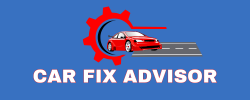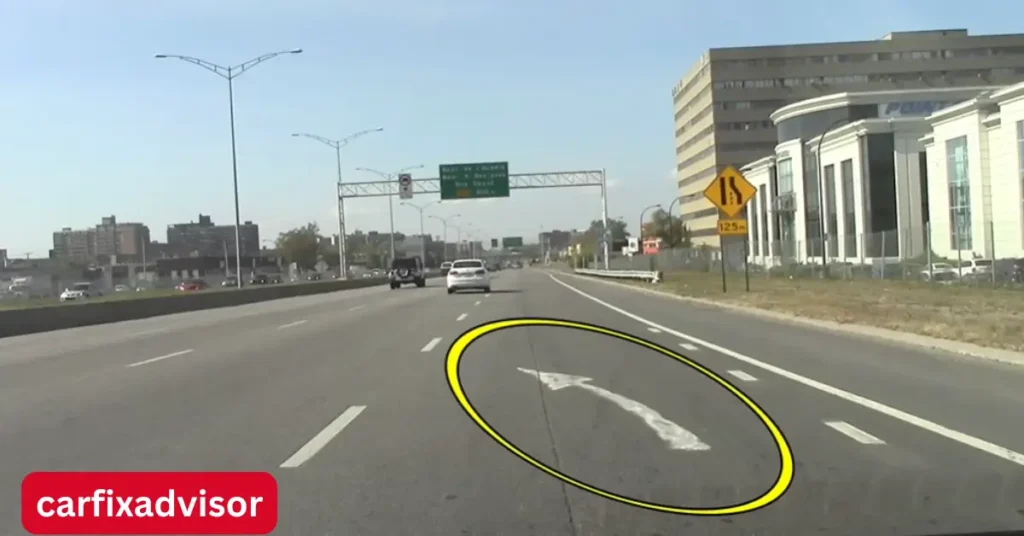Embarking on driving on the highway for the first time alone is an exhilarating experience that offers a newfound sense of freedom and independence. The open road ahead, the hum of your car’s engine, and the thrill of venturing beyond your familiar surroundings can be truly liberating. However, this excitement often comes with a mixture of anticipation and anxiety, especially if you’re new to driving on the highway for the first time alone.
In this article, we will guide you through everything you need to know about driving on the highway for the first time alone. From preparing your car to understanding highway etiquette and handling emergencies, these practical tips will ensure a smooth and stress-free journey.
Tips For Driving on the Highway
1. Prepare Your Car for the Journey
Before you even think about driving on the highway for the first time alone, it’s crucial to make sure your car is ready for the trip. Highway driving places additional demands on your vehicle, particularly when you’re traveling long distances, and ensuring your car is in top condition will give you the peace of mind needed for a safe journey.
What to Check Before You Drive:
Oil and Fluids: Ensure that your engine oil, brake fluid, and transmission fluid are at the correct levels. These fluids are vital for the smooth operation of your car, especially when you’re driving on the highway for the first time alone. Long highway stretches mean fewer chances to stop for refills, so make sure everything is in check.
Tires: Check your tire pressure and tread depth to ensure they’re in roadworthy condition. Low tire pressure can affect fuel efficiency and handling, while worn-out tires pose a serious danger, especially at high speeds on the highway.
Battery: Ensure your car battery is fully charged and the terminals are clean. A dead battery is one of the worst things that could happen when you’re driving on the highway for the first time alone, and being stranded far from home can add unnecessary stress.
Windshield Wipers and Fluid: Clean, functioning wipers are crucial for visibility, particularly if you encounter sudden weather changes while driving on the highway for the first time alone. Ensure your windshield washer fluid is topped off and that the wipers are free from cracks.
By taking these simple steps, you’ll avoid unnecessary stress on the road and feel confident that your car is ready for the adventure of driving on the highway for the first time alone.
2. Plan Your Route and Stay Informed
A successful experience of driving on the highway for the first time alone begins long before you turn the ignition key. Planning your route carefully is essential for a smooth and efficient journey. While it’s tempting to hit the road and let the adventure unfold, a little bit of preparation can save you time, energy, and possible frustration.
How to Plan Your Route:
Use Reliable Navigation Tools: Apps like Google Maps, Waze, or Apple Maps are indispensable for navigating highways. These tools provide real-time traffic updates, suggest the fastest routes, and help you avoid accidents, roadblocks, and unnecessary detours. When driving on the highway for the first time alone, using a reliable navigation app will help you feel more secure.
Check Road Conditions: It’s also wise to check the weather and road conditions before heading out. If you’re driving on the highway for the first time alone through areas that are prone to rain, fog, or snow, being aware of road conditions can make all the difference. This awareness helps you adjust your driving habits to ensure safety.
Plan for Rest Stops: Long highway journeys can be tiring, and you’ll need to take breaks. Familiarize yourself with rest areas, gas stations, and food stops along your route. This way, you’ll know where you can stop to recharge, stretch your legs, and grab a snack. Remember, driving on the highway for the first time alone can be draining, so don’t hesitate to take a break when needed.
Having a well-thought-out plan for your route will reduce stress and increase your confidence while driving on the highway for the first time alone.
3. Adhere to Speed Limits and Drive at a Comfortable Pace
When you’re driving on the highway for the first time alone, it’s natural to feel the urge to speed up and enjoy the open road. The vast lanes and seemingly endless stretches of highway can make you want to push your car to its limits. However, it’s crucial to maintain a safe and legal speed while driving.
Why Speed Limits Matter:
Speed limits exist for a reason. They’re there not only to protect you but also to keep other drivers safe. Driving on the highway for the first time alone can be overwhelming, especially with higher speeds and different traffic dynamics. Ignoring speed limits can lead to dangerous situations and, in some cases, costly speeding fines.
Tips for Maintaining Safe Speed:
Stick to the Speed Limit: As exciting as it might be to drive faster, sticking to the speed limit ensures you remain in control of your vehicle. It also helps you avoid unnecessary tickets and keeps you and others safe while you’re driving on the highway for the first time alone.
Adjust for Conditions: Speed limits on the highway can vary depending on weather, road conditions, or traffic flow. If you’re driving through areas where visibility is poor or rain is falling, slow down and maintain a safe distance from other vehicles. Remember that conditions often change rapidly when you’re driving on the highway for the first time alone.
Drive Comfortably: Don’t feel pressured to keep up with other drivers, especially those who may be driving faster than you’re comfortable with. Driving at a speed that feels right for you is crucial for staying calm and focused while driving on the highway for the first time alone.
By respecting speed limits and driving at a comfortable pace, you’ll feel more at ease and in control, helping you enjoy the experience of driving on the highway for the first time alone.
4. Be Prepared for Emergencies and Have an Emergency Kit
Even though we hope nothing goes wrong during your journey, it’s always better to be prepared, especially when you’re driving on the highway for the first time alone. Emergencies can occur unexpectedly, whether it’s a flat tire, a breakdown, or a medical issue. Having an emergency kit with you will help you manage any situation with confidence.
Essential Items for Your Emergency Kit:
First Aid Kit: Having a basic first aid kit on hand can be a lifesaver in the event of minor injuries. Include bandages, antiseptic wipes, and over-the-counter medications, and make sure to check it regularly.
Spare Tire and Jack: A flat tire is one of the most common issues on the road, especially when driving on the highway for the first time alone. Having a spare tire and the necessary tools to change it will allow you to handle the situation without waiting for roadside assistance.
Jumper Cables: If your car battery dies, jumper cables will help you restart your vehicle with the assistance of another car.
Flashlight and Batteries: A reliable flashlight will help you inspect your car at night or during an emergency. Always carry extra batteries.
Water and Snacks: For longer trips, it’s a good idea to carry water and non-perishable snacks to keep yourself hydrated and energized.
In addition to these physical items, consider using a roadside assistance app, such as the Etiqa Smile App, to access emergency help quickly and easily.
Being prepared for any emergency situation while driving on the highway for the first time alone will give you the confidence to handle whatever comes your way.
5. Leave Road Rage Behind and Stay Calm
When you’re driving on the highway for the first time alone, it’s crucial to stay calm, no matter what happens. Highway driving can be stressful, especially with the high-speed traffic and other drivers who may not always follow the rules. Road rage can escalate quickly, putting you and others at risk.
How to Handle Aggressive Drivers:
Don’t Take It Personally: If another driver is tailgating or speeding aggressively, don’t take it personally. People can be rude or impatient, but it’s not worth engaging. Let them pass and focus on your own driving.
Maintain a Safe Distance: Always keep a safe following distance from the vehicle in front of you. This will give you plenty of time to react if there are sudden stops or changes in traffic conditions.
Avoid Aggressive Behavior: If someone is honking at you or driving too closely, resist the urge to retaliate. Excessive honking, speeding, or weaving in and out of traffic can create more problems. Stay patient and calm to ensure you can make the best decisions in high-pressure situations.
By leaving road rage behind, you’ll maintain a calmer state of mind and a safer driving experience while driving on the highway for the first time alone.
6. Take Breaks When Needed
Driving long distances on the highway for the first time can be physically and mentally exhausting, especially if you’re unaccustomed to it. Fatigue can impair your reaction times, decision-making, and focus, which can increase the risk of accidents.
Why Breaks Are Important:
Rest and Recharge: Regular breaks allow you to rest, stretch your legs, and avoid fatigue. It’s easy to get caught up in the journey and forget to take care of yourself, but remember that a tired driver is a dangerous driver.
Stay Hydrated and Nourished: During your breaks, hydrate and eat a healthy snack to keep your energy levels up. Avoid heavy, greasy meals that can make you feel sluggish or sleepy.
Where to Stop:
Rest Areas: Look for rest stops along your route where you can safely pull over, stretch, and refresh yourself.
Gas Stations: If there are no designated rest areas, stopping at a gas station is a good alternative. Many gas stations have quick convenience stores where you can grab a drink or snack.
If you’re driving on the highway for the first time alone, taking breaks is essential to maintaining your focus and ensuring a safe journey. Don’t push yourself to go without rest, especially if you feel tired or distracted.
7. Share Your Live Location for Safety
One of the most important things to remember when you’re driving on the highway for the first time alone is to stay connected. In case something unexpected happens, it’s always a good idea to let someone know your whereabouts.
Why Sharing Your Location is Important:
Increased Security: If you’re ever in a situation where you need help, having someone track your location can speed up emergency response. They can alert authorities or send help if needed.
Peace of Mind: Knowing that someone you trust is aware of your whereabouts can ease anxiety, especially if you’re a bit nervous about driving on the highway for the first time alone. It’s reassuring to know you’re not entirely alone on the road.
How to Share Your Location:
Use WhatsApp or Find My App: On iOS, you can share your live location using the “Find My” app, and on Android, you can use Google Maps or WhatsApp’s live location feature.
Choose a Trusted Person: Make sure the person you’re sharing your location with is reliable and can act quickly in case of an emergency.
By sharing your live location with someone you trust, you’ll be able to drive with more confidence and less anxiety, knowing that help is just a few taps away if something goes wrong.
8. Understand Highway Driving Etiquette
As you get more experienced in driving on the highway for the first time alone, it’s important to understand the basic etiquette of highway driving. Respecting other drivers and following common rules of the road will help ensure everyone’s safety.
Key Highway Driving Etiquette:
Use Your Indicators: Always signal when you plan to change lanes or exit the highway. This simple act of courtesy helps prevent accidents and lets other drivers know your intentions.
Don’t Hog the Left Lane: On highways, the left lane is typically for passing. If you’re not overtaking another vehicle, keep to the right lane to allow faster traffic to pass you.
Be Mindful of Merging Traffic: When entering a highway from an on-ramp, give way to traffic already on the highway. Similarly, if you’re driving and see another vehicle merging onto the highway, adjust your speed or position to make room.
By following these basic rules of highway driving etiquette, you’ll contribute to a safer, smoother driving experience for yourself and others while driving on the highway for the first time alone.
9. Stay Aware of Surrounding Traffic
When you’re driving on the highway for the first time alone, it’s easy to get caught up in your own thoughts or the excitement of the journey. However, staying alert and being aware of the surrounding traffic is crucial for your safety and the safety of others on the road.
How to Stay Alert:
Scan the Road Ahead: Always be aware of vehicles in front, behind, and around you. Scan the road ahead for any potential hazards like construction zones, debris, or stopped vehicles.
Check Your Mirrors Frequently: Make it a habit to check your mirrors every few seconds, especially before changing lanes or merging. Being aware of the traffic around you will help you make better, more informed decisions.
Avoid Distractions: One of the most important aspects of driving on the highway for the first time alone is keeping distractions to a minimum. Avoid using your phone, adjusting the radio, or engaging in activities that take your attention away from the road.
By staying aware of your surroundings, you’ll be prepared to react quickly to changes in traffic and road conditions, keeping your journey safe and stress-free.
10. Know When to Exit the Highway
Exiting the highway for the first time alone might seem straightforward, but it’s essential to know the proper procedure to do it safely. Whether you’re making a turn or merging onto another road, highway exits often come up quickly, and a smooth transition is key.
Steps for Exiting Safely:
Plan Ahead: Look for signs well in advance to know when your exit is approaching. Most highways will provide exit signs a mile or more before the actual exit.
Signal Early: Use your indicators well in advance to let other drivers know you’re preparing to exit. This allows those around you to adjust their speed and position if necessary.
Slow Down Gradually: Start reducing your speed before you reach the exit ramp. Exiting too quickly can lead to loss of control, especially if the ramp is curved or slippery.
By following these steps, you’ll be able to exit the highway smoothly and with confidence, making your drive much more enjoyable.
11. Dealing with Highway Traffic Jams
While driving on the highway for the first time alone can be peaceful, it’s important to prepare for traffic jams or unexpected delays. Highway traffic can sometimes come to a standstill, which might be frustrating if you’re not used to it.
How to Manage Traffic Jams:
Stay Patient: If you encounter a traffic jam, it’s essential to remain patient. Resist the urge to weave in and out of lanes or make risky maneuvers. These actions can cause accidents and make the situation worse.
Keep a Safe Following Distance: Maintain a safe distance from the car in front of you. In stop-and-go traffic, this gives you more room to react and prevents rear-end collisions.
Use Your Time Wisely: Traffic jams might give you the opportunity to catch up on a podcast, listen to music, or simply relax. Try not to get frustrated or anxious—remember, this part of the journey is temporary, and it’s all part of driving on the highway for the first time alone.
Traffic jams are an unavoidable part of highway driving, but by staying calm and maintaining good driving habits, you can manage them effectively.
12. Reflect on Your Journey and Learn from It
After completing your journey, take a moment to reflect on your experience. Driving on the highway for the first time alone is a significant milestone, and each journey offers valuable lessons that help you improve as a driver.
What to Reflect On:
What Went Well: Think about the aspects of your trip that went smoothly. Did you feel confident handling the car? Were your preparations (such as the emergency kit and route planning) helpful? Celebrate your successes!
What Can Be Improved: Did you encounter any challenges? Perhaps you found yourself stressed during a traffic jam or uncertain about lane changes. Reflect on these moments to identify areas where you can improve for future trips.
Every highway drive, whether it’s your first or hundredth, is an opportunity to become a more skilled, confident, and thoughtful driver.
Final thoughts
Driving on the highway for the first time alone is a milestone that marks a new chapter in your driving journey. It’s an experience that offers independence, adventure, and personal growth. By following these tips and preparing yourself both mentally and physically for the journey, you can ensure a safe and enjoyable drive.
Remember, highway driving doesn’t have to be daunting. Take it one step at a time, stay calm, and focus on the road ahead. The more you practice, the more comfortable and confident you’ll become. And before you know it, you’ll be cruising the highways with ease, embracing the freedom and adventure that comes with every mile.


